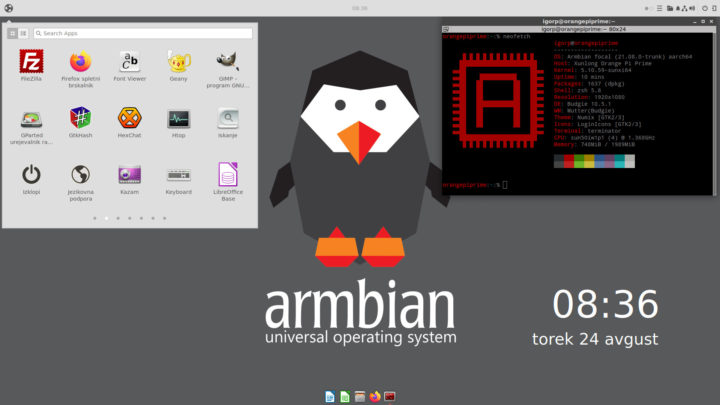Armbian provides stable releases four times a year, and Armbian 21.08 has just been released offering minimal, server or XFCE, Cinnamon and Budgie desktop Linux 5.10 LTS images for Arm boards, as well as a build system to customize your own image.
If you’ve been using an Arm SBC that is NOT a Raspberry Pi board, you’ve probably been told to use Armbian, as the community is providing Debian and Ubuntu images for over 100 Arm boards that are either “Supported”, “WIP” (suitable for testing), or “CSC” (no official support, aka you’re on your own).
Armbian 21.08 highlights (Note: EDGE are daily builds following daily builds of the Linux kernel and fresh packages from Debian sid, Ubuntu 21.04 “hirsute” or Ubuntu 21.10 “impish” userland):
- Based on Linux 5.10.59 released on August 15, 2021
- Minimal, server or XFCE, Cinnamon, and Budgie desktop
- Fast automated language selection on the first run
- Regular stable and daily beta & EDGE updates
- CLI is powered with ZSH or BASH
- Added automated kernel upgrade on EDGE 5.13.y kernels
- Added mainline based SPI boot support for Odroid HC4
- Added Qemu virtual Armbian builds
- Added CSC images for Tinkerboard 2, Rock Pi N10
- Added ZFS upgrade to v2.1
- Improved Github Actions CI and CDN network
- Added Cinnamon and Budgie desktop
- Enabled 3D support wherever it’s possible and works reasonably well
- Added Khadas VIM1-3 & Edge boards, Avnet Microzed
- Enabled VPU support for Rockchip
- Added legacy kernel support for Orange Pi Zero2, Nvidia Jetson
- Declare Ubuntu Hirsute and Debian Bullseye packages as stable
- Added Ubuntu Impish and Debian Sid as beta build targets
- Added KDE plasma DE as a beta build target
There are some known issues as well. 3D graphics acceleration had to be disabled on Amlogic due to instability, Odroid C4/HC4 boot problem remains but will be fixed in the next version, and several desktop environments (Deepin, Enlightenment, Gnome, i3, KDE plasma, Mate, Xmonad) are not officially supported anymore, albeit still available in the build system, due to lack of space and maintenance.
If you’d like to install Armbian 21.08 on one of the supported boards, download one of the relevant images, and flash it to a MicroSD card with Win32DiskImager, USBImager, or other tools. If you want to upgrade from an existing Armbian installation just run the following commands:
|
1 2 3 |
sudo apt update sudo apt dist-upgrade sudo reboot |

Jean-Luc started CNX Software in 2010 as a part-time endeavor, before quitting his job as a software engineering manager, and starting to write daily news, and reviews full time later in 2011.
Support CNX Software! Donate via cryptocurrencies, become a Patron on Patreon, or purchase goods on Amazon or Aliexpress





